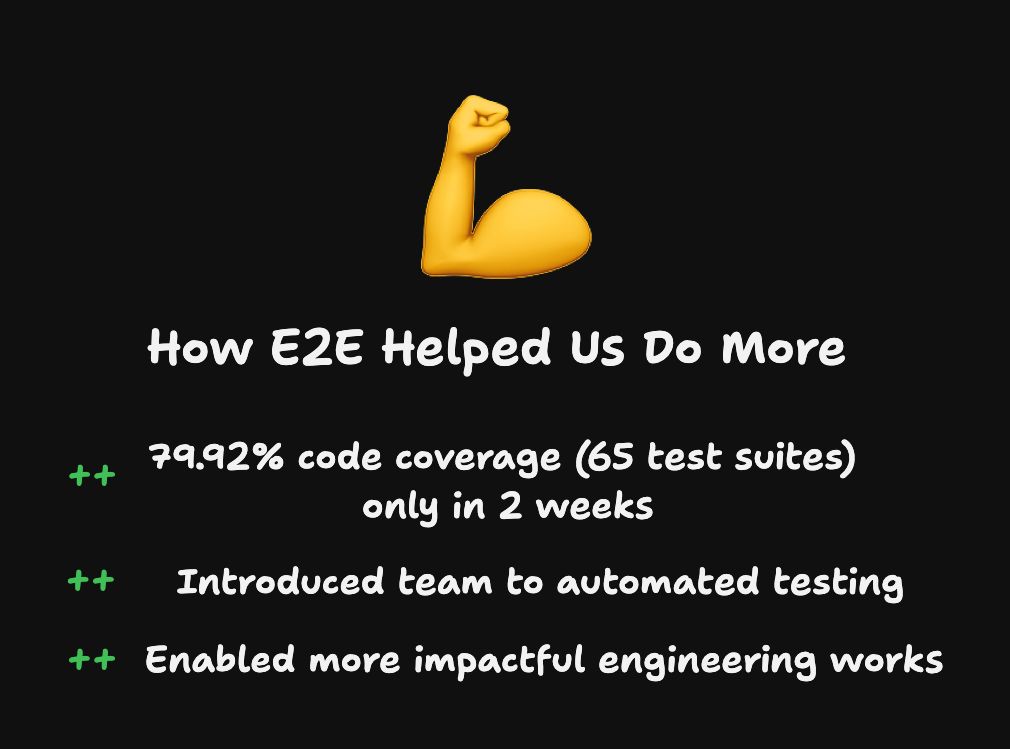
E2E Testing: Our Secret Weapon for Fearless Engineering Improvements 💪
One day we faced a demanding task: Upgrading two major versions of our web framework. Without automated testing in our codebase, this was a significant risk that could kept us up at night 😱
The solution: We implemented Playwright for E2E testing, giving us a quick way to validate critical user paths, focusing on high-impact coverage. Essentially the E2E works as a smoke tests for us, ensuring the upgrade wouldn’t break the app in painfully obvious ways (for those not familiar with E2E, I’ll leave a link in comments).
We worked from 0% code coverage to 79.92% with just 65 test suites in only 2 weeks of writing tests. Kudos to the team for achieving this Azad Shukor Adam Sulthoni Akbar Iqbal Mohamad Zainuddin 🤝
Eventually, we had zero detected regression issues related to the upgrade 🎉
That’s not all! Besides the web framework upgrade, we used E2E to guide us in making many other risky engineering work:
- Optimizing our docker image size by 51%
- Improving maintainability of our codebase by removing 3,353 unused lines of code, eliminating 7 unused dependencies, and increasing code collocation by 1,353 lines of code
- Migrating our codebase to a monorepo architecture
- Upgrading our Node.js version from 18.X to the latest 20.X
And there’s bound to be more to come! Having E2E has been a game changer for us, guiding us to achieve more impactful engineering initiatives 🎯
In the future, we’re planning to add more proper and comprehensive automated testing, starting from integration down to unit tests, which will better alert us to any potentially breaking changes.
Back to you: Do you have automated testing in your codebase? What benefits do you find them provide?
That’s it! Hopefully that was useful. See you later in the next one 👋